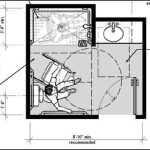How to Work From Home with Multiple Sclerosis
Many people with multiple sclerosis work from home. Fatigue remains one of the most prominent symptoms of MS. Waking up early, getting ready for the day, and commuting can already prove tiresome for a person without a chronic condition – when you add in the challenges of MS, the daily grind can really zap your productivity.
But if you subtract out everything but the actual work and add some nifty home office features, you’ll find that you are less burned out — and that you can get quite a lot done at home. Also, since symptoms vary widely, and staying active and engaged in your life does help manage MS, it’s worth continuing to work.

Setting Yourself Up for Success in a Home Office
So, you’ve had the conversation with your employer. You’ve both agreed to your remote work accommodations. Great! What now? Will a laptop on the kitchen table suffice? This might get you through a transitional period, but we highly recommend creating an intentional home office space. Once again, this is something that would support any person working from home. Blurring your domestic space with your work space can cultivate stress and uneasiness over time. And, due to certain MS challenges – fine motor skills, fatigue, or vision problems, to name a few – you’ll want to design your home office with proactive solutions in mind. There are so many available to help you create a supportive, comfortable work space.Create a Separate Space for Work
Our strongest recommendation is to carve out a differentiated home office space. As you can probably already imagine, the health benefits extend through physical, mental, and emotional. This will depend on your individual home design. Larger home modifications may come into play at this point. We can help evaluate what works best for your current structure and budget. Depending on your home, it may be best to:- Move your home office set-up to a first-floor room.
- Retrofit a room to make it into a home office.
- Add MS-supportive modifications to a current home office, like:
- Soundproofing the walls to reduce distraction (a cognitive symptom of MS)
- Ergonomic furnishings, computer set-up, and storage
The Essential Accessible Desk
It is best to give yourself a lot of leeway with your choice of desk. Generally, this means choosing a roll-under desk at a moderate height – we recommended between 28 and 34 inches. Since mobility can vary widely with MS, you’ll appreciate the option to use a wheelchair under the desk down the road, if you need it.
If you do work from a wheelchair, use a pressure-relieving cushion to maximize comfort while sitting for long periods.
If you use an office chair, it is worth investing in the most ergonomic version possible. We like the brand Vela, but whatever you choose, you’ll want your home office chair to provide these key features:
- Electric lift, to shorten the distance between standing and sitting
- A brake for safety – to keep the chair from rolling when you sit or stand
- Foot rest
- Adjustable seat and backrest to optimally fit your body and posture
- Comfortable padding – and why not get it in a color that you enjoy?!
Activity Stations in Close Proximity
In keeping with the recommendations in our larger article, Living with Multiple Sclerosis: Quick Fixes and Long-Term Home Modifications, cluster activity stations near the home office to avoid unnecessary trips. When you are feeling the fatigue of MS, you will appreciate having the essentials nearby!
Most people would make use of a small coffee or tea station with a coffee maker, electric kettle, and mugs. If you are renovating or constructing a home office, you could dream even bigger and include a kitchenette – or at least a mini fridge.
The other satellite stations will depend on your specific home office needs. For instance, if you need to send packages frequently, you might create a “shipping station” with a table, tape, printer, and boxes at the ready. Or if you work as a designer, you might benefit from a “creative inspiration station” with swatches of colors, textiles, craft materials, and prints of artwork or magazine clippings.
Do retain some activity in your work day. Research consistently shows that staying mobile helps ameliorate many MS symptoms – physical, mental, and emotional. So even though you’ll appreciate the option to save energy when you need it, try to work some light walking and movement into your work day when possible.
Apps can really assist with this goal. Several on the market include “stand timers” that remind you to get up at least once an hour. They can include guided stretches that balance out common desk postures, an extra boost to keep your muscles limber and comfortable.

Avoid Sensory Overload
We mentioned soundproofing your home office to help reduce distractions. This is because another cognitive symptom of MS is sensory overload. Thankfully, you can design your home office to offset this, too.
The key is to make your environment underwhelming. Reduce clutter with sufficient storage, cabinetry, shelving, and an honest “Kondo” of the space before you start working!
Think about what makes a space calm and uncluttered for you. Does that mean keeping the essential tools visible on a shelf, like calendar, planner, scissors, hole punch…? Or is it less taxing for you to have items tucked away in labeled drawers or cabinets? (If you do employ drawers or cabinets, make sure the handles are large and easy to grip.)
Wherever possible, incorporate natural light into your home office. If you can renovate with a large window or two, enable natural light to fill the space. But include a good set of blinds to control sun glare and temperature. If your home office is an ADU, make sure that it has a functional HVAC system.
Where natural light is less possible – or if you tend to work at night – you can still use full-spectrum light bulbs to mimic natural light.
We recommend calm colors on the walls and in the home office design: blues, grays, or greens. But, again, individualize! Maybe you tend toward depression more than sensory overload? In that case, you might want to brighten up the space with a sunny yellow accent wall or a decorative stencil in coral or aubergine.
Adapt Technology to Manage MS Symptoms
If you’re working at home with MS, it’s likely that you’ll be communicating with your co-workers and doing your work on a computer. Some MS symptoms may present challenges to computer work, but technology adaptations have arisen to meet these.

Choose an alternative keyboard. Many folks benefit ergonomically from a nontraditional keyboard, not just people working with MS. Depending on your particular fine motor skill needs, you may want a keyboard that responds to a lighter touch to reduce strain. You might even go with an on-screen keyboard instead of one with physical keys.
Voice-recognition software. If you need to take notes quickly during a meeting, sometimes typing won’t suffice. In that case, you may be able to speak notes to voice recognition software. This can come in handy when you’re jotting things down during the work day for yourself, too. Text-to-speech technology works similarly if you need to draft rapid-fire messages to coworkers.
Adapt your mouse. To minimize the effects of tremors or shaking, you can use a less responsive mouse. This will prevent your on-screen pointer from quivering at the slightest movement, instead responding only to broad motions.
Adjust your screen to combat visual challenges. Most modern screens for computers, tablets, and phones come with adjustable settings and filters. Depending on your vision abilities at the moment, you can change font size, brightness, and any other screen color filters that make it easier to read and see your work.
Consider Other Holistic Factors
Working from home extends beyond your home office. Your experiences and encounters before and after your work day affect your productivity. Here are a few to consider when designing your home for sustainable remote work.
Get good rest. Several symptoms of MS can affect sleep, and sleep certainly affects productivity.
To ease cognitive symptom interference, create a relaxation routine to wind down from the work day. Make a habit of leaving your work items, like your laptop or paperwork, in the home office – or at least out of the bedroom. You can employ apps to structure this routine, like Headspace or Calm.
Optimize your bedroom sleep design to combat physical symptoms of MS. You’ll want to make it a cool, dark space to counter temperature and visual sensitivity. This can be accomplished with automated blinds, black-out curtains, and automated or voice-controlled temperature control.
Bring nature into your home space. Working from home can prove stressful for anybody, MS or not. You’ll want to minimize how much work stress you carry into the rest of your life.
Green spaces help many people unload from a hectic work day. You might create a sun room with houseplants, an easily accessible outdoor patio, or just a plant wall or shelf in your bedroom or living room.
If you doubt your green thumb, coming into contact with natural materials on a regular basis can also help reduce stress. This is why we often opt to incorporate wood, stone, and forms from nature in the home design.
Create space for your hobbies and passions, too. If you’re going to devote a room to work, why not make your recreation easier too? While renovating, you could add a nook for a library, accessible shelving for crafts, a music room, or any space your heart desires! Participating in hobbies that you love will help keep your mind and body balanced.
Schedule a Design Consultation Today
However big or small your work-from-home needs, Live in Place Designs can help you create a home office that’s accommodating and comfortable. Contact us today to get the conversation started.






